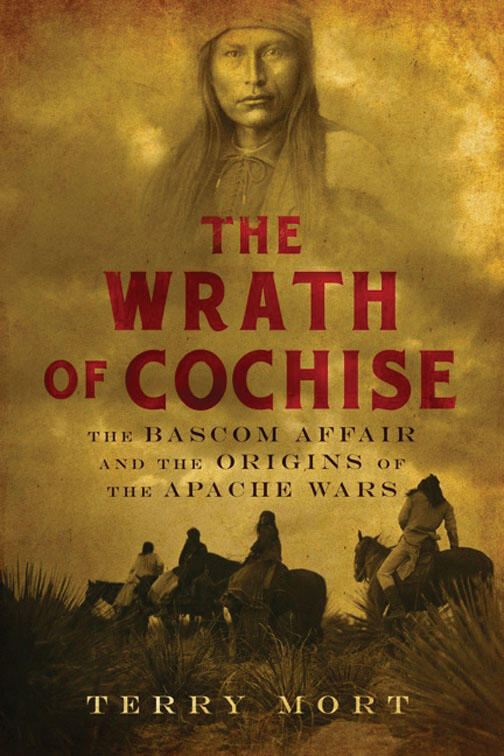In 1861, the border between Arizona and Mexico was a dangerous place, with raiding parties of Indians threatening the American settlers who were moving in from the east through Apache Pass in the mountains, not far from today’s Tucson. It was at that pass that two cultures came into an explosive confrontation — with one bloody episode that triggered a 25-year war between the U.S. Army and the Apache people — says Terry Mort ’64 in The Wrath of Cochise (Pegasus Books).
On this windswept pass, an inexperienced West Point graduate named Lt. George Bascom met inside a tent with Cochise, a feared leader of the Chiricahua Indians (a subgroup of the Apaches) to accuse him of having kidnapped the young stepson of a local rancher. Mort doubts that Cochise had been involved. Nonetheless, Bascom told him (along with some of Cochise’s relatives) that they were now hostages for the boy’s return. In an instant, Cochise pulled out his knife, ripped open the tent, and escaped into the hills amid gunfire.
To punish Bascom, Cochise lost no time in retaliating. His warriors seized a wagon train as it crossed Apache Pass, taking four Americans hostage; then Cochise’s warriors lashed nine Mexican associates of the settlers to the wheels of the wagons and burned them alive. Thus began a long series of guerrilla attacks and counterattacks that claimed thousands of lives until the Chiricahua were crushed. They were exiled as prisoners of war to Florida in 1886.
A Vietnam veteran and the author of several books, including three novels, Mort lives in Arizona, not far from where these horrific events took place. “It’s beautiful there today, but eerie,” he says. “It’s easy to imagine what happened.” In reading about the Indian Wars, he became intrigued by the Apache Pass events but found that they rarely receive much attention from historians. “It’s a footnote of history, but you can drill down and discuss all sorts of topics around it,” he says, such as intertribal dynamics and the competing interests of settlers and Indians. Similarly, it was stumbling across a single footnote in a history book that led him to write a previous study about Ernest Hemingway’s patrols of the Caribbean during World War II.
In describing the cultural conflict, Mort has resisted easy interpretations. Some accounts favor the long-suffering Indians, but Mort concludes that Cochise was by no means wholly the victim. “I dislike the binary constructs that people put onto everything nowadays,” he says. “He was an accomplished leader, but he was a murderer — and the border was an awful place.”
In Mort’s telling, the story takes on deeper dimensions. “It’s almost Aristotelian,” he explains. “It has a tragic hero, Cochise, who makes a fatal decision — and that results in tragedy.”
WHAT HE’S READING: Nomad: George A. Custer in Turf, Field, and Farm, by American Civil War general George Armstrong Custer (edited by Brian W. Dippie)
What he likes about it: This collection of hunting and horseracing articles that Custer wrote for a sportsman’s magazine has “interesting insights into the man’s personality.”














No responses yet